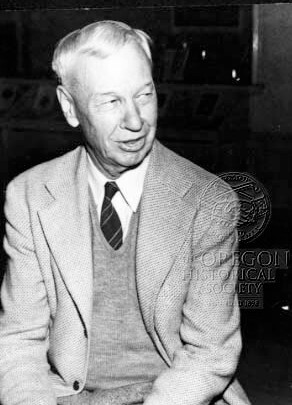C.S. Price
Few artists are as crucial to the establishment of the Pacific Northwest landscape tradition as C.S. Price (1874-1950) was. Clayton Sumner Price was born on a farm in Iowa and, at an early age, began to sketch the farm animals and land around him. In 1884 his family moved to Wyoming, and until 1905 his job and focus in life had become cattle ranching. In 1905 a family friend recognized his artistic talent and paid for him to attend the St Louis School of Fine Arts, which he attended before going back to ranching in order to pay his patron back. He then became an illustrator for Pacific Monthly in 1909 but left for the San Francisco bay area soon after. Once there, the Panama-Pacific Exposition in 1915 changed the course of Price’s life. Through that exposition, he was introduced to the new abstract art of Europe with artists such as Pablo Picasso (1881-1973), who inspired Price to experiment with abstraction. In addition, Price was also inspired by those who helped usher in the modern era/modernist art, such as Paul Cézanne (1839-1906).
In 1928 as the Great Depression hit the United States, Price relocated to Portland and quickly began making murals through the Works Progress Administration. The 1940s was a prolific decade for Price as he exhibited in places like the Museum of Modern Art in New York and had a retrospective at the Portland Art Museum in 1942. It was also during this time that he began to develop his distinctive style. Many of Price’s paintings look fractured, thick, and messy due to his penchant for reworking each of his paintings five or six times. He often used a palette knife rather than a standard brush to slather on the paint and scrape it into different forms, creating an impasto or thick layer of paint on the otherwise flat surface of the canvas. During this decade, Price moved away from depicting animals in his work and towards a more abstract non-figurative painting style to explore nature more broadly.
There’s always a certain mysticism associated with Price, and much of this is due to his philosophy. He was often quoted saying he was looking for the “One Big Thing” that incorporated all living beings. While he often mentioned God and being spiritual, Price was never associated with a particular church or religion. Instead, he made art to learn about nature, people, and everything spiritual, expressing that through his paintings, paintings that are multi-sensorial and evoke profound contemplation.
Price’s significance to this region’s art history is best said in the book The Life and Art of C.S. Price, “By drawing on this tradition of modern arts interest in archetypes- mountain and shelter, as well as animal life- Price welded modernist painting as it took root in the Pacific Northwest in the 1930s and 1940s to late nineteenth and early twentieth century roots in Europe” (184).

